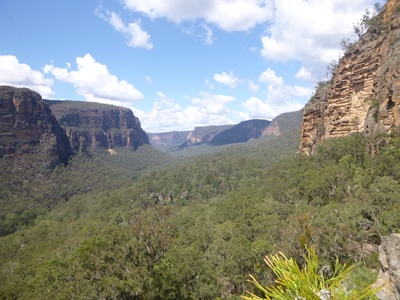Living on the Edge
Managing invasive species threats to the Greater Blue Mountains World Heritage Area
This project is supported by Central Tablelands Local Land Services through funding from the Australian Government's National Landcare Program.
At more than 1 million hectares, the Greater Blue Mountains World Heritage Area (GBMWHA) is one of the largest and most intact tracts of protected bushland in Australia. It was added to the world heritage list in 2000. This listing acknowledges the unique plants and animals it supports and its representation of the evolution of Australia's distinctive eucalypt vegetation. Thirteen percent of all Australia's eucalypt species can be found in the area.
The significant plants and animals found in the habitats are under threat from invasive plants and animals. 'Living on the Edge' will bring together stakeholders in priority areas to manage these threats to the Greater Blue Mountains World Heritage Area (GBMWHA).
Through collaborating with key stakeholders, we will build capacity among private landowners through the provision of training, support and resources to undertake invasive species management and help to protect the GBMWHA.
The interface of the GBMWHA within the Central Tablelands Local Land Services Region is just under 700 kilometres.
Invasive species management will focus on 5 priority sites along the interface of the GBMWHA (map):
- Capertee Valley
- Wolgan Valley
- Kanimbla / Megalong Valleys (in collaboration with Greater Sydney LLS)
- Jenolan
- Tuglow / Hollanders
This work will protect key assets within the WHA such as the threatened brush-tailed rock-wallaby and complement work being undertaken by NPWS within the GBMWHA Estate.

Looking down the Capertee River, Greater Blue Mountains World Heritage Area
Greater Blue Mountains World Heritage Area
Project Partners
- Australian Government National Landcare Regional Land Partnership
- Greater Sydney LLS
- National Parks and Wildlife Service
- Upper Macquarie County Council
Some useful links
